Deploying a Wireless Sensor Network to Track Pesticide Pollution in Kiu Wetland Wells: A Field Study
Abstract
1. Introduction
2. Related Work
3. Field Study Site
4. Materials and Methods
4.1. Radio Planning
4.1.1. Propagation Models
- Log-distance path loss model
- Okumura–Hata
- COST 231-Hata
4.1.2. Forest Terrain
4.1.3. RSSI and SNR Measurements Across Deployment Area
4.2. Water Contamination Measurement
4.2.1. Measurement Campaigns and the Feeding of Data into the Sensors
- Human–system interaction
4.2.2. Sample Collection and Pesticide Determination
- Pesticide residue tests
5. Results
5.1. Simulation Analysis
5.1.1. Mean Absolute Error (MAE)
5.1.2. Root Mean Square Error (RMSE)
5.1.3. Standard Deviation (SD)
5.2. Experimental Results Analysis for Radio Planning
5.2.1. Layout of Wells
5.2.2. Monitoring of Pesticide Residues
5.2.3. Validation of Pesticide Residue Results Using Laboratory Procedure
6. Discussion
6.1. LoRa Signal Propagation in the Wetland Terrain
6.2. Influence of Weather Conditions on Pesticide Residues
6.2.1. Pre-Monitoring Period
6.2.2. Monitoring Phase
6.3. System Usability Analysis
6.3.1. Technical Implementation
- Bill of materials and system programming
- 2.
- Implementation consideration.
- Error handling
- Scalability
- Power efficiency
6.3.2. Estimated Power Consumption
Total average current drawn = 55 + 6 = 61 mA
- Solar panel sizing
- This energy can fully recharge the battery in a day after many days of poor weather conditions.
- The battery can support the system in a working condition for 11 days without an external energy input.
7. Conclusions
Author Contributions
Funding
Institutional Review Board Statement
Informed Consent Statement
Data Availability Statement
Conflicts of Interest
Appendix A. List of Analytes Tested Using Analytical Methods for Validation
References
- Zulkifli, C.Z.; Garfan, S.; Talal, M.; Alamoodi, A.H.; Alamleh, A.; Ahmaro, I.Y.Y.; Sulaiman, S.; Ibrahim, A.B.; Zaidan, B.B.; Ismail, A.R.; et al. IoT-based water monitoring systems: A systematic review. Water 2022, 14, 3621. [Google Scholar] [CrossRef]
- Chafa, A.T.; Chirinda, G.P.; Matope, S. Design of a real–time water quality monitoring and control system using internet of things (IoT). Cogent. Eng. 2022, 9, 2143054. [Google Scholar] [CrossRef]
- Promput, S.; Maithomklang, S.; Panya-isara, C. Design and analysis performance of IoT-based water quality monitoring system using LoRa technology. TEM J. 2023, 12, 29–35. [Google Scholar] [CrossRef]
- Jiang, X.; Lv, Y.; Yan, H. Design of centralized heating monitoring system based on wireless sensor networks. J. Sens. 2022, 2022, 1308615. [Google Scholar] [CrossRef]
- Maheshwaran, S.; Chen, W.; Lin, S.; Ghorbani, M.; Hoang, A.T. Metal oxide-based electrochemical sensors for pesticide detection in water and food samples: A review. Environ. Sci. Adv. 2024, 3, 154–176. [Google Scholar] [CrossRef]
- Yu, G.; Wang, J.; Liu, L.; Li, Y.; Zhang, Y.; Wang, S. The analysis of groundwater nitrate pollution and health risk assessment in rural areas of Yantai, China. BMC Public Health 2020, 20, 437. [Google Scholar] [CrossRef]
- Sousa, M.C.; Martins, R.; Simões, N.E.; Feio, M.J. Ecosystem services of urban rivers: A systematic review. Aquat. Sci. 2025, 87, 10. [Google Scholar] [CrossRef]
- United States Environmental Protection Agency. National Enforcement and Compliance Initiative: Increasing Compliance with Drinking Water Standards. Available online: https://www.epa.gov/enforcement/national-enforcement-and-compliance-initiative-increasing-compliance-drinking-water-0 (accessed on 30 May 2025).
- Jonsson, O.; Paulsson, E.; Kreuger, J. TIMFIE sampler—A new time-integrating, active, low-tech sampling device for quantitative monitoring of pesticides in whole water. Environ. Sci. Technol. 2018, 53, 279–286. [Google Scholar] [CrossRef]
- Spycher, S.; Kalf, D.; Lahr, J.; Gönczi, M.; Lindström, B.; Pace, E.; Botta, F.; Bougon, N.; Staub, P.-F.; Hitzfeld, K.L.; et al. Linking chemical surface water monitoring and pesticide regulation in selected european countries. Environ. Sci. Pollut. Res. 2024, 31, 43432–43450. [Google Scholar] [CrossRef]
- Goel, A.; Aggarwal, P. Pesticide poisoning. Natl. Med. J. India 2007, 20, 182. [Google Scholar]
- Frazier, L.M. Reproductive disorders associated with pesticide exposure. J. Agromed. 2007, 12, 27–37. [Google Scholar] [CrossRef] [PubMed]
- Yadav, I.C.; Devi, N.L. Pesticides classification and its impact on human and environment. Environ. Sci. Eng. 2017, 6, 140–158. [Google Scholar]
- Matzrafi, M. Climate change exacerbates pest damage through reduced pesticide efficacy. Pest Manag. Sci. 2019, 75, 9–13. [Google Scholar] [CrossRef] [PubMed]
- Desmarteau, D.A.; Ritter, A.M.; Hendley, P.; Guevara, M.W. Impact of wind speed and direction and key meteorological parameters on potential pesticide drift mass loadings from sequential aerial applications. Integr. Environ. Assess. Manag. 2020, 16, 197–210. [Google Scholar] [CrossRef]
- Heinrich Böll Foundation. Pesticides Atlas. pp. 24–25, 14 Octomber 2022. Available online: https://ke.boell.org/en/2022/10/14/pesticides-atlas (accessed on 23 March 2025).
- World Bank. Rural Population (% of Total Population)—Kenya. Available online: https://data.worldbank.org/indicator/SP.RUR.TOTL.ZS?locations=KE (accessed on 23 March 2025).
- Directorate-General for External Policies of the Union (European Parliament); Swagata, S.; Juliana, D.; Bernardes, G.; James, K.; Niklas, M.; Kees, J. The Use of Pesticides in Developing Countries and Their Impact on Health and The Right to Food; Publications Office of the EU: Luxembourg, 2021. Available online: https://op.europa.eu/en/publication-detail/-/publication/652ce244-6b53-11eb-aeb5-01aa75ed71a1/language-en (accessed on 23 March 2025).
- Kenya National Bureau of Statistics (KNBS). Kenya Demographic and Health Survey (KDHS) 2022 Summary Report. 2023. Available online: https://www.knbs.or.ke/wp-content/uploads/2023/08/Kenya-Demographic-and-Health-Survey-KDHS-2022-Summary-Report.pdf (accessed on 6 May 2025).
- Mulwa, F.; Li, Z.; Fangninou, F.F. Water scarcity in kenya: Current status, challenges and future solutions. Open Access Libr. J. 2021, 8, 1–15. [Google Scholar] [CrossRef]
- Pico, Y.; Alfarhan, A.H.; Barcelo, D. How recent innovations in gas chromatography-mass spectrometry have improved pesticide residue determination: An alternative technique to be in your radar. TrAC Trends Anal. Chem. 2020, 122, 115720. [Google Scholar] [CrossRef]
- Kuster, M.; Lopez De Alda, M.; Barcelo, D. Analysis of pesticides in water by liquid chromatography-tandem mass spectrometric techniques: Liquid chromatography-mass spectrometry, pesticides, food, and the environment. Mass Spectrom. Rev. 2006, 25, 900–916. [Google Scholar] [CrossRef]
- Ayala-Cabrera, J.; Montero, L.; Meckelmann, S.W.; Uteschil, F.; Schmitz, O.J. Review on atmospheric pressure ionization sources for gas chromatography-mass spectrometry. Part II: Current applications. Anal. Chim. Acta 2023, 1238, 340379. [Google Scholar] [CrossRef]
- Ghosh, S.; AlKafaas, S.S.; Bornman, C.; Apollon, W.; Hussien, A.M.; Badawy, A.E.; Amer, M.H.; Kamel, M.B.; Mekawy, E.A.; Bedair, H. The application of rapid test paper technology for pesticide detection in horticulture crops: A comprehensive review. Beni-Suef. Univ. J. Basic Appl. Sci. 2022, 11, 73. [Google Scholar] [CrossRef]
- Sindhu, S.; Manickavasagan, A. Nondestructive testing methods for pesticide residue in food commodities: A review. Compr. Rev. Food Sci. Food Saf. 2023, 22, 1226–1256. [Google Scholar] [CrossRef]
- Tsagkaris, A.S.; Pulkrabova, J.; Hajslova, J. Optical screening methods for pesticide residue detection in food matrices: Advances and emerging analytical trends. Foods 2021, 10, 88. [Google Scholar] [CrossRef] [PubMed]
- Adu-Manu, K.S.; Katsriku, F.A.; Abdulai, J.-D.; Engmann, F. Smart river monitoring using wireless sensor networks. Wirel. Commun. Mob. Comput. 2020, 2020, 97126. [Google Scholar] [CrossRef]
- Laha, S.R.; Pattanayak, B.K.; Pattnaik, S. Advancement of environmental monitoring system using IoT and sensor: A comprehensive analysis. AIMS Environ. Sci. 2022, 9, 771–800. [Google Scholar] [CrossRef]
- Zheng, K.; Fu, J.; Liu, X. Relay selection and deployment for NOMA-enabled multi-AAV-assisted WSN. IEEE Sens. J. 2025, 25, 16235–16249. [Google Scholar] [CrossRef]
- Faustine, A.; Mvuma, A.N. Ubiquitous mobile sensing for water quality monitoring and reporting within lake victoria basin. Wirel. Sens. Netw. 2014, 6, 257–264. [Google Scholar] [CrossRef]
- Mohd Reduan, M.H.F.; Mohd Ali, A.M.; Basir Khan, M.R. Water quality monitoring system based on microcontroller and LoRa. Malays. J. Sci. Adv. Technol. 2021, 1, 32–35. [Google Scholar] [CrossRef]
- Razman, N.A.; Ismail, W.Z.W.; Razak, M.H.A.; Ismail, I.; Jamaludin, J. Design and analysis of water quality monitoring and filtration system for different types of water in malaysia. Int. J. Environ. Sci. Technol. 2023, 20, 3789–3800. [Google Scholar] [CrossRef]
- Huan, J.; Li, H.; Wu, F.; Cao, W. Design of water quality monitoring system for aquaculture ponds based on NB-IoT. Aquacult. Eng. 2020, 90, 102088. [Google Scholar] [CrossRef]
- Qian, X.; Li, Z.; Meng, Z.; Gao, N.; Zhang, Z. Flexible RFID tag for sensing the total minerals in drinking water via smartphone tapping. JSEN 2021, 21, 24749–24758. [Google Scholar] [CrossRef]
- Olatinwo, S.O.; Joubert, T. Enabling communication networks for water quality monitoring applications: A survey. Access 2019, 7, 100332–100362. [Google Scholar] [CrossRef]
- Zhang, Y.; Li, Q. Exploiting ZigBee in reducing WiFi power consumption for mobile devices. IEEE Trans. Mob. Comput. 2014, 13, 2806–2819. [Google Scholar] [CrossRef]
- Wong, A.W.; Goh, S.L.; Hasan, M.K.; Fattah, S. Multi-hop and mesh for LoRa networks: Recent advancements, issues, and recommended applications. ACM Comput. Surv. 2024, 56, 1–43. [Google Scholar] [CrossRef]
- Vejlgaard, B.; Lauridsen, M.; Nguyen, H.; Kovacs, I.Z.; Mogensen, P.; Sorensen, M. Coverage and Capacity Analysis of Sigfox, LoRa, GPRS, and NB-IoT. In Proceedings of the 2017 IEEE 85th Vehicular Technology Conference (VTC Spring), Sydney, NSW, Australia, 4–7 June 2017; pp. 1–5. [Google Scholar] [CrossRef]
- Ismail, D.; Rahman, M.; Saifullah, A. Low-Power Wide-Area Networks: Opportunities, Challenges, and Directions. In Proceedings of the Workshop Program of the 19th International Conference on Distributed Computing and Networking, Varanasi, India, 4–7 January 2018; pp. 1–6. [Google Scholar]
- Azevedo, J.A.; Mendonça, F. A critical review of the propagation models employed in LoRa systems. Sensors 2024, 24, 3877. [Google Scholar] [CrossRef] [PubMed]
- Batalha, I.d.S.; Lopes, A.V.R.; Lima, W.G.; Barbosa, Y.H.S.; De Alcântara Neto, M.C.; Barros, F.J.B.; Cavalcante, G.P.S. Large-scale modeling and analysis of uplink and downlink channels for LoRa technology in suburban environments. IEEE Internet Things J. 2022, 9, 24477–24491. [Google Scholar] [CrossRef]
- Sharma, P.K.; Singh, R.K. Comparative analysis of propagation path loss models with field measured data. Int. J. Eng. Sci. Technol. 2010, 2, 2008–2013. [Google Scholar]
- Bor, M.; Roedig, U. LoRa Transmission Parameter Selection. In Proceedings of the 2017 13th International Conference on Distributed Computing in Sensor Systems (DCOSS), Ottawa, ON, Canada, 5–7 June 2017; pp. 27–34. [Google Scholar]
- Dieng, O.; Pham, C.; Thiare, O. Comparing and Adapting Propagation Models for LoRa Networks. In Proceedings of the 2020 16th International Conference on Wireless and Mobile Computing, Networking and Communications (WiMob), Thessaloniki, Greece, 12–14 October 2020; pp. 1–7. [Google Scholar]
- El Chall, R.; Lahoud, S.; El Helou, M. LoRaWAN network: Radio propagation models and performance evaluation in various environments in Lebanon. IEEE Internet Things J. 2019, 6, 2366–2378. [Google Scholar] [CrossRef]
- Mutunga, T.; Sinanovic, S.; Harrison, C.S. Integrating wireless remote sensing and sensors for monitoring pesticide pollution in surface and groundwater. Sensors 2024, 24, 3191. [Google Scholar] [CrossRef]
- Pasolini, G. On the LoRa chirp spread spectrum modulation: Signal properties and their impact on transmitter and receiver architectures. IEEE Trans. Wirel. Commun. 2022, 21, 357–369. [Google Scholar] [CrossRef]
- Chen, S.; Lin, S.; Lan, C.; Chou, T. Design and Development of a LoRa Based Water Quality Monitoring System. In Proceedings of the 2021 International Symposium on Intelligent Signal Processing and Communication Systems (ISPACS), Hualien City, Taiwan, 16–19 November 2021; pp. 1–2. [Google Scholar]
- Chen, W.; Hao, X.; Lu, J.; Yan, K.; Liu, J.; He, C.; Xu, X. Research and design of distributed IoT water environment monitoring system based on LoRa. Wirel. Commun. Mob. Comput. 2021, 2021, 9403963. [Google Scholar] [CrossRef]
- Liloja; Sreelekha, M.; Gopakumar, G.; Shahil, K. IoT-Based Water Quality Monitoring System using LoRaWAN. In Computer Networks and Inventive Communication Technologies, Proceedings of the Third ICCNCT 2020, Coimbatore, Tamilnadu, India, 23–24 July 2020; Springer: Singapore, 2021; pp. 1157–1170. [Google Scholar]
- Hsieh, C.; Tsai, Y.J.; Stefanie, C.; Wang, C.C.; Chang, W.S. The Preliminary Design of Water Quality Monitor System for the Ecological Pond Based on LoRaWAN. In Proceedings of the 2020 International Symposium on Computer, Consumer and Control (IS3C), Taichung City, Taiwan, 13–16 November 2020; pp. 365–367. [Google Scholar]
- Hagh, S.F.; Amngostar, P.; Zylka, A.; Zimmerman, M.; Cresanti, L.; Karins, S.; O’Neil-Dunne, J.P.; Ritz, K.; Williams, C.J.; Morales-Williams, A.M.; et al. Autonomous UAV-mounted LoRaWAN system for real-time monitoring of harmful algal blooms (HABs) and water quality. IEEE Sens. J. 2024, 24, 11414–11424. [Google Scholar] [CrossRef]
- Jáquez, A.D.B.; Herrera, M.T.A.; Celestino, A.E.M.; Ramírez, E.N.; Cruz, D.A.M. Extension of LoRa coverage and integration of an unsupervised anomaly detection algorithm in an iot water quality monitoring system. Water 2023, 15, 1351. [Google Scholar] [CrossRef]
- Thiyagarajan, N.; Shanmugasundaram, N. An Investigation on Energy Consumption in Wireless Sensor Network. In Proceedings of the 2022 8th International Conference on Advanced Computing and Communication Systems (ICACCS), Coimbatore, India, 25–26 March 2022; pp. 1359–1364. [Google Scholar] [CrossRef]
- Abo-Zahhad, M.; Farrag, M.; Ali, A.; Amin, O. An Energy Consumption Model for Wireless Sensor Networks. In Proceedings of the 5th International Conference on Energy Aware Computing Systems & Applications, Cairo, Egypt, 24–26 March 2015; pp. 1–4. [Google Scholar] [CrossRef]
- Philip, M.S.; Singh, P. Adaptive transmit power control algorithm for dynamic LoRa nodes in water quality monitoring system. Sustain. Comput. Inform. Syst. 2021, 32, 100613. [Google Scholar] [CrossRef]
- Baghel, L.K.; Gautam, S.; Malav, V.K.; Kumar, S. TEMPSENSE: LoRa enabled integrated sensing and localization solution for water quality monitoring. IEEE Trans. Instrum. Meas. 2022, 71, 3000311. [Google Scholar] [CrossRef]
- Loos, R.; Gawlik, B.M.; Locoro, G.; Rimaviciute, E.; Contini, S.; Bidoglio, G. EU-wide survey of polar organic persistent pollutants in european river waters. Environ. Pollut. 2009, 157, 561–568. [Google Scholar] [CrossRef]
- Richardson, S.D.; Ternes, T.A. Water analysis: Emerging contaminants and current issues. Anal. Chem. 2014, 86, 2813–2848. [Google Scholar] [CrossRef]
- Farrington, J.W. Organic chemicals of environmental concern: Water sampling and analytical challenges. Oceanography 2014, 27, 214–216. [Google Scholar] [CrossRef]
- Hites, R.A. The analysis of organic water pollutants by gas chromatography and gas chromatography-mass spectrometry. Adv. Chromatogr. 1977, 15, 69–112. [Google Scholar]
- Pujar, P.M.; Kenchannavar, H.H.; Kulkarni, R.M.; Kulkarni, U.P. Real-time water quality monitoring through internet of things and ANOVA-based analysis: A case study on river krishna. Appl. Water Sci. 2020, 10, 22. [Google Scholar] [CrossRef]
- Rosero-Montalvo, P.D.; López-Batista, V.F.; Riascos, J.A.; Peluffo-Ordóñez, D.H. Intelligent WSN system for water quality analysis using machine learning algorithms: A case study (tahuando river from ecuador). Remote Sens. 2020, 12, 1988. [Google Scholar] [CrossRef]
- Ramadhan, A.J.; Ali, A.; Kareem, H. Smart water-quality monitoring system based on enabled real-time internet of things. J. Eng. Sci. Technol. 2020, 15, 3514–3527. [Google Scholar]
- Bogdan, R.; Paliuc, C.; Crisan-Vida, M.; Nimara, S.; Barmayoun, D. Low-cost internet-of-things water-quality monitoring system for rural areas. Sensors 2023, 23, 3919. [Google Scholar] [CrossRef] [PubMed]
- Nguyen, T.H.; Helm, B.; Hettiarachchi, H.; Caucci, S.; Krebs, P. Quantifying the information content of a water quality monitoring network using principal component analysis: A case study of the freiberger mulde river basin, Germany. Water 2020, 12, 420. [Google Scholar] [CrossRef]
- Xiao, Y.; Guo, Y.; Yin, G.; Zhang, X.; Shi, Y.; Hao, F.; Fu, Y. UAV multispectral image-based urban river water quality monitoring using stacked ensemble machine learning algorithms—A case study of the Zhanghe river, China. Remote Sens. 2022, 14, 3272. [Google Scholar] [CrossRef]
- Rahim, J.; Budiati, L. Online water quality monitoring: A case study in the umbulan drinking water supply system, East Java, Indonesia. Int. J. Public Health Sci. 2024, 13, 303–310. [Google Scholar] [CrossRef]
- Qian, J.; Liu, H.; Qian, L.; Bauer, J.; Xue, X.; Yu, G.; He, Q.; Zhou, Q.; Bi, Y.; Norra, S. Water quality monitoring and assessment based on cruise monitoring, remote sensing, and deep learning: A case study of Qingcaosha reservoir. Front. Environ. Sci. 2022, 10, 979133. [Google Scholar] [CrossRef]
- The Things Network. Frequency Plans by Country. Available online: https://www.thethingsnetwork.org/docs/lorawan/frequencies-by-country/ (accessed on 24 March 2025).
- Anzum, R. Factors that affect LoRa propagation in foliage medium. Procedia Comput. Sci. 2021, 194, 149–155. [Google Scholar] [CrossRef]
- Myagmardulam, B.; Tadachika, N.; Takahashi, K.; Miura, R.; Ono, F.; Kagawa, T.; Shan, L.; Kojima, F. Path loss prediction model development in a mountainous forest environment. IEEE Open J. Commun. Soc. 2021, 2, 2494–2501. [Google Scholar] [CrossRef]
- Ojo, M.O.; Viola, I.; Miretti, S.; Martignani, E.; Giordano, S.; Baratta, M. A deep learning approach for accurate path loss prediction in LoRawan livestock monitoring. Sensors 2024, 24, 2991. [Google Scholar] [CrossRef]
- Stusek, M.; Moltchanov, D.; Masek, P.; Mikhaylov, K.; Zeman, O.; Roubicek, M.; Koucheryavy, Y.; Hosek, J. Accuracy assessment and cross-validation of LPWAN propagation models in urban scenarios. IEEE Access 2020, 8, 154625–154636. [Google Scholar] [CrossRef]
- Phillips, C.; Sicker, D.; Grunwald, D. A survey of wireless path loss prediction and coverage mapping methods. IEEE Commun. Surv. Tutor. 2012, 15, 255–270. [Google Scholar] [CrossRef]
- Bianco, G.M.; Giuliano, R.; Marrocco, G.; Mazzenga, F.; Mejia-Aguilar, A. LoRa system for search and rescue: Path-loss models and procedures in mountain scenarios. IEEE Internet Things J. 2020, 8, 1985–1999. [Google Scholar] [CrossRef]
- Jawhly, T.; Tiwari, R.C. Loss exponent modeling for the hilly forested region in the VHF band III. Radio Sci. 2021, 56, e2020RS007201. [Google Scholar] [CrossRef]
- Petajajarvi, J.; Mikhaylov, K.; Roivainen, A.; Hanninen, T.; Pettissalo, M. On the Coverage of LPWANs: Range Evaluation and Channel Attenuation Model for LoRa Technology. In Proceedings of the 2015 14th International Conference on its Telecommunications (ITST), Copenhagen, Denmark, 2–4 December 2015; pp. 55–59. [Google Scholar]
- Uyoata, U.E. LoRa Network Planning using Empirical Path Loss Models. In Proceedings of the 2022 IEEE Nigeria 4th International Conference on Disruptive Technologies for Sustainable Development (NIGERCON), Lagos, Nigeria, 5–7 April 2022; pp. 1–5. [Google Scholar]
- Shakir, Z.; Al-Thaedan, A.; Alsabah, R.; Al-Sabbagh, A.; Salah, M.E.M.; Zec, J. Performance evaluation for RF propagation models based on data measurement for LTE networks. Int. J. Inf. Technol. 2022, 14, 2423–2428. [Google Scholar] [CrossRef]
- Abhayawardhana, V.S.; Wassell, I.J.; Crosby, D.; Sellars, M.P.; Brown, M.G. Comparison of Empirical Propagation Path Loss Models for Fixed Wireless Access Systems. In Proceedings of the 2005 IEEE 61st Vehicular Technology Conference, Stockholm, Sweden, 30 May 2005–1 June 2005; Volume 1, pp. 73–77. [Google Scholar] [CrossRef]
- Harinda, E.; Hosseinzadeh, S.; Larijani, H.; Gibson, R.M. Comparative Performance Analysis of Empirical Propagation Models for LoRaWAN 868MHz in an Urban Scenario. In Proceedings of the 2019 IEEE 5th World Forum on Internet of Things (WF-IoT), Limerick, Ireland, 15–18 April 2019; pp. 154–159. [Google Scholar] [CrossRef]
- Milanovic, J.; Rimac-Drlje, S.; Majerski, I. Radio Wave Propagation Mechanisms and Empirical Models for Fixed Wireless Access Systems. 2010. Available online: https://core.ac.uk/download/pdf/14421803.pdf (accessed on 23 March 2025).
- Hakim, G.P.N.; Habaebi, M.H.; Toha, S.F.; Islam, M.R.; Yusoff, S.H.B.; Adesta, E.Y.T.; Anzum, R. Near ground pathloss propagation model using adaptive neuro fuzzy inference system for wireless sensor network communication in forest, jungle and open dirt road environments. Sensors 2022, 22, 3267. [Google Scholar] [CrossRef]
- Imoize, A.L.; Otuokere, E.M.; Ajose, S.O.; Adegbenro, A.O. Experimental validation of a best-fit model for predicting radio wave propagation through vegetation. Arid. Zone J. Eng. Technol. Environ. 2019, 15, 172–186. [Google Scholar]
- Phaiboon, S.; Phokharatkul, P. A tree attenuation factor model for a low-power wide-area network in a ruby mango plantation. Sensors 2024, 24, 750. [Google Scholar] [CrossRef]
- Ndzi1, D.L.; Kamarudin, L.M.; Mohammad, E.A.A.; Zakaria, A.; Ahmad, R.B.; Fareq, M.M.A.; Shakaff, A.Y.M.; Jafaar, M.N. Vegetation attenuation measurements and modeling in plantations for wireless sensor network planning. Prog. Electromagn. Res. B 2012, 36, 283–301. [Google Scholar] [CrossRef]
- Gutiérrez-Gómez, A.; Rangel, V.; Edwards, R.M.; Davis, J.G.; Aquino, R.; López-De la Cruz, J.; Mendoza-Cano, O.; Lopez-Guerrero, M.; Geng, Y. A propagation study of LoRA P2P links for IoT applications: The case of near-surface measurements over semitropical rivers. Sensors 2021, 21, 6872. [Google Scholar] [CrossRef]
- Azevedo, J.A.; Santos, F.E. A model to estimate the path loss in areas with foliage of trees. AEU—Int. J. Electron. Commun. 2017, 71, 157–161. [Google Scholar] [CrossRef]
- HopeRF. RFM95W LoRa Module Datasheet. Available online: https://www.hoperf.com/modules/lora/RFM95W.html (accessed on 2 March 2025).
- Mutunga, T.; Sinanovic, S.; Harrison, C. A wireless network for monitoring pesticides in groundwater: An inclusive approach for a vulnerable kenyan population. Sensors 2024, 24, 4665. [Google Scholar] [CrossRef]
- Yim, D.; Chung, J.; Cho, Y.; Song, H.; Jin, D.; Kim, S.; Ko, S.; Smith, A.; Riegsecker, A. An Experimental LoRa Performance Evaluation in Tree Farm. In Proceedings of the 2018 IEEE Sensors Applications Symposium (SAS), Seoul, Republic of Korea, 12–14 March 2018; pp. 1–6. [Google Scholar] [CrossRef]
- Blaunstein, N.; Censor, D.; Katz, D.; Freedman, A.; Matityahu, I. Radio propagation in rural residential areas with vegetation. Prog. Electromagn. Res. 2003, 40, 131–153. [Google Scholar] [CrossRef]
- Yang, K.; Chen, Y.; Su, T.; Du, W. Link Quality Modeling for LoRa Networks in Orchards. In Proceedings of the 22nd International Conference on Information Processing in Sensor Networks, San Antonio, TX, USA, 9–12 May 2023; pp. 27–39. [Google Scholar]
- Karthik. Log Distance Path Loss or Log Normal Shadowing Model. GaussianWaves. Available online: https://www.gaussianwaves.com/2013/09/log-distance-path-loss-or-log-normal-shadowing-model/ (accessed on 6 June 2025).
- Ferreira, A.E.; Ortiz, F.M.; Costa, L.H.M.; Foubert, B.; Amadou, I.; Mitton, N. A study of the LoRa signal propagation in forest, urban, and suburban environments. Ann. Telecommun. 2020, 75, 333–351. [Google Scholar] [CrossRef]
- Grübel, J.; Thrash, T.; Aguilar, L.; Gath-Morad, M.; Hélal, D.; Sumner, R.W.; Hölscher, C.; Schinazi, V.R. Dense indoor sensor networks: Towards passively sensing human presence with LoRaWAN. Pervasive Mob. Comput. 2022, 84, 101640. [Google Scholar] [CrossRef]
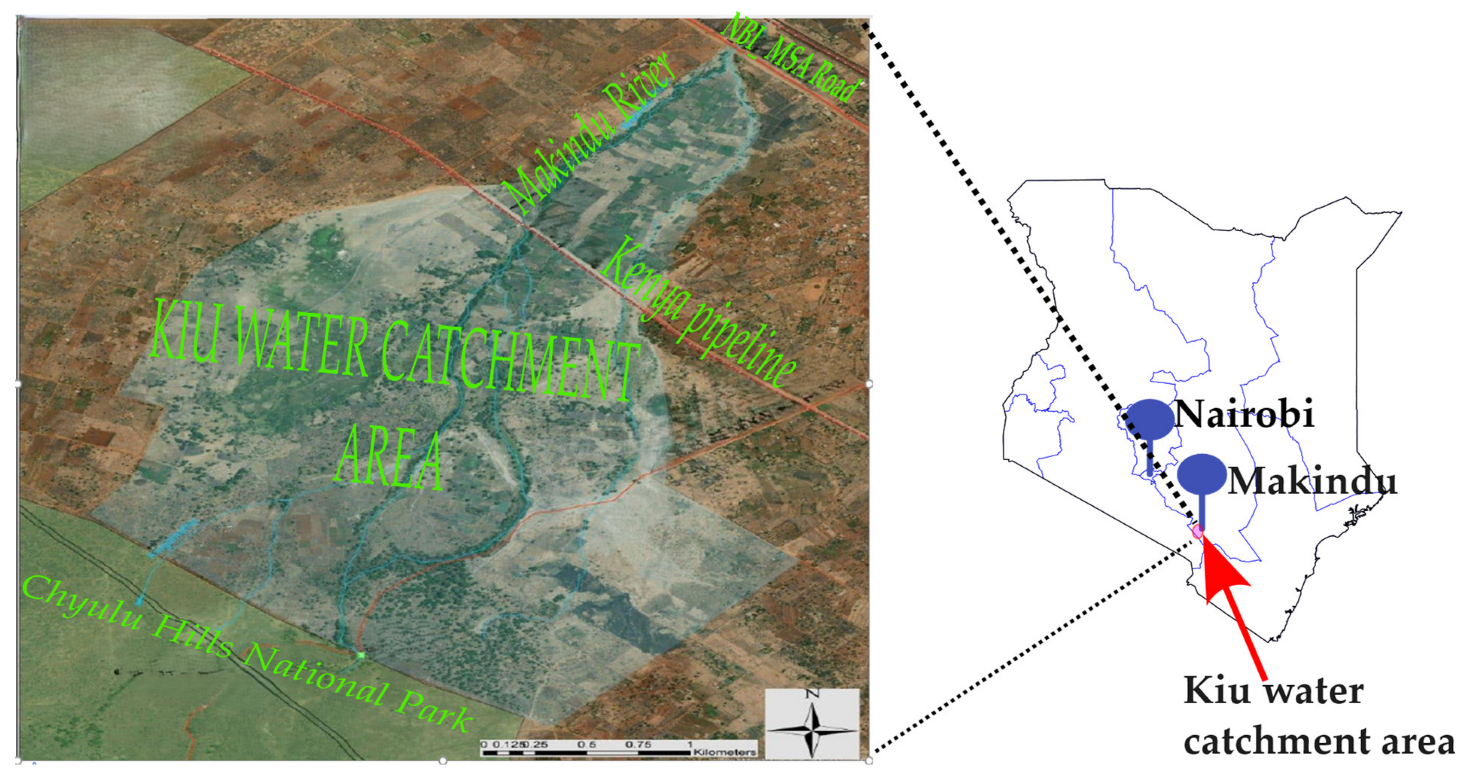
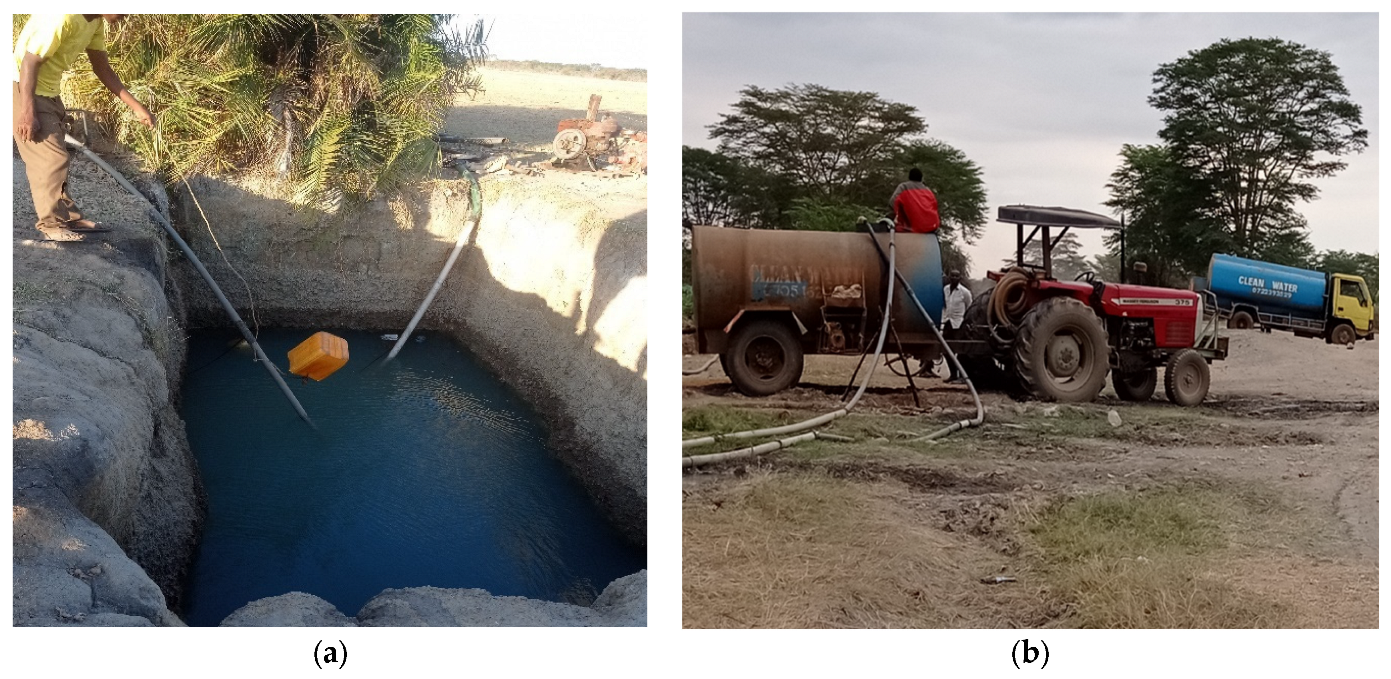

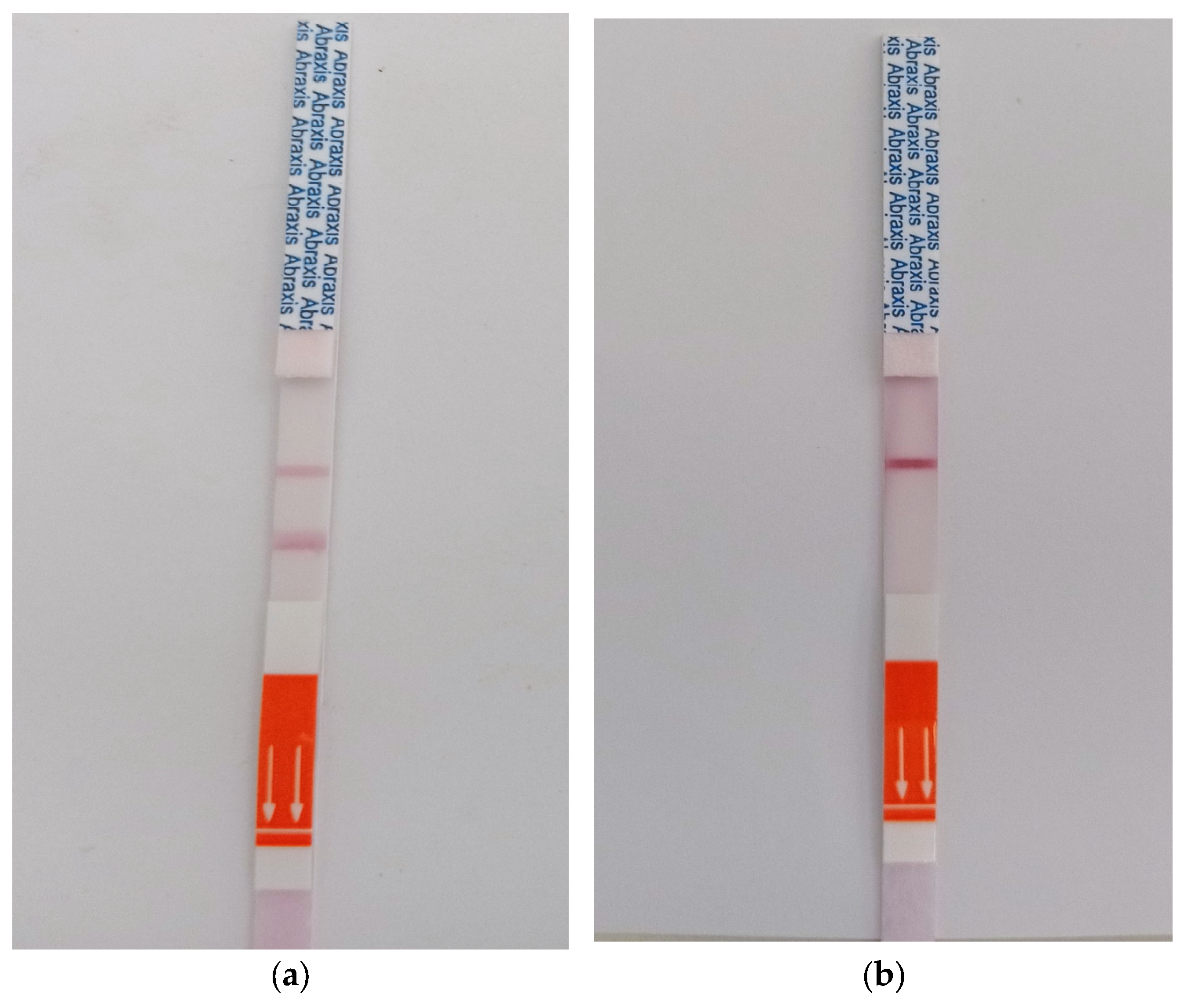
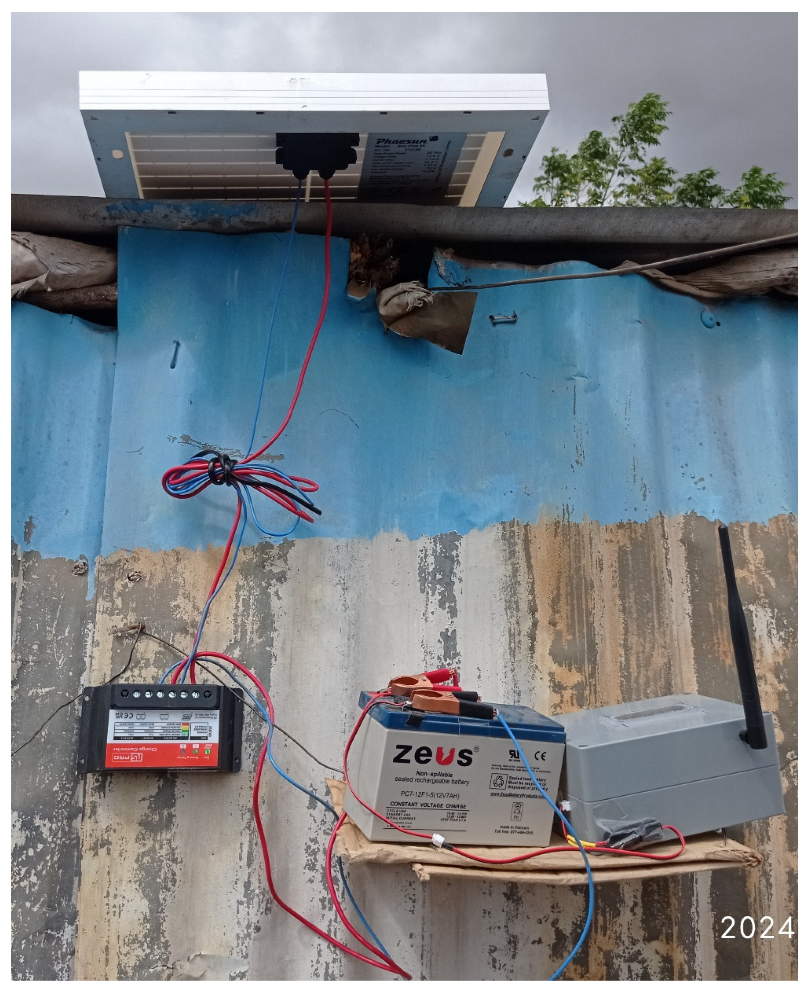
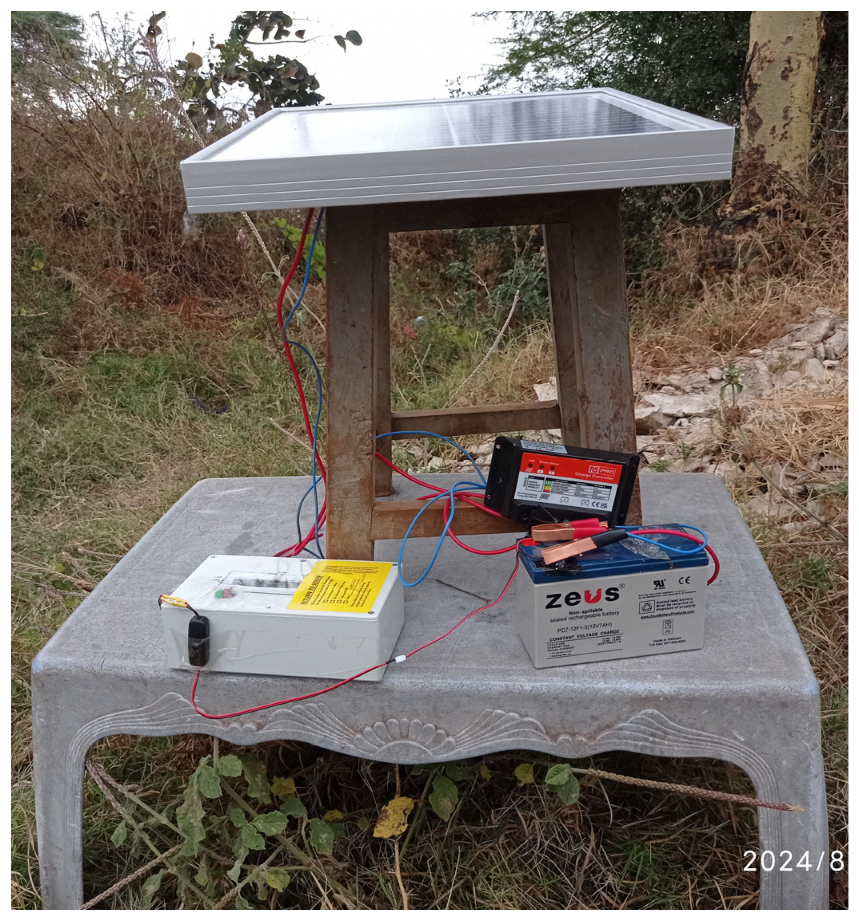


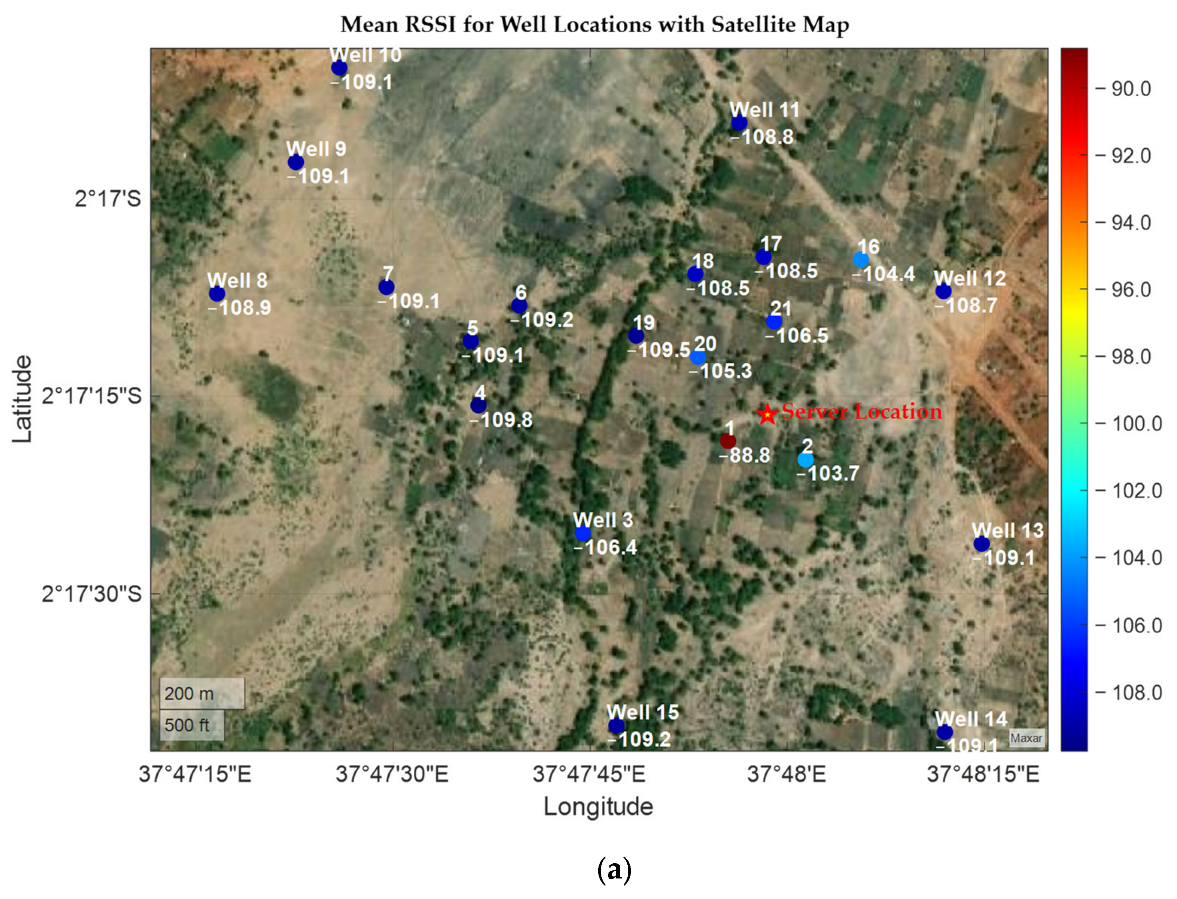
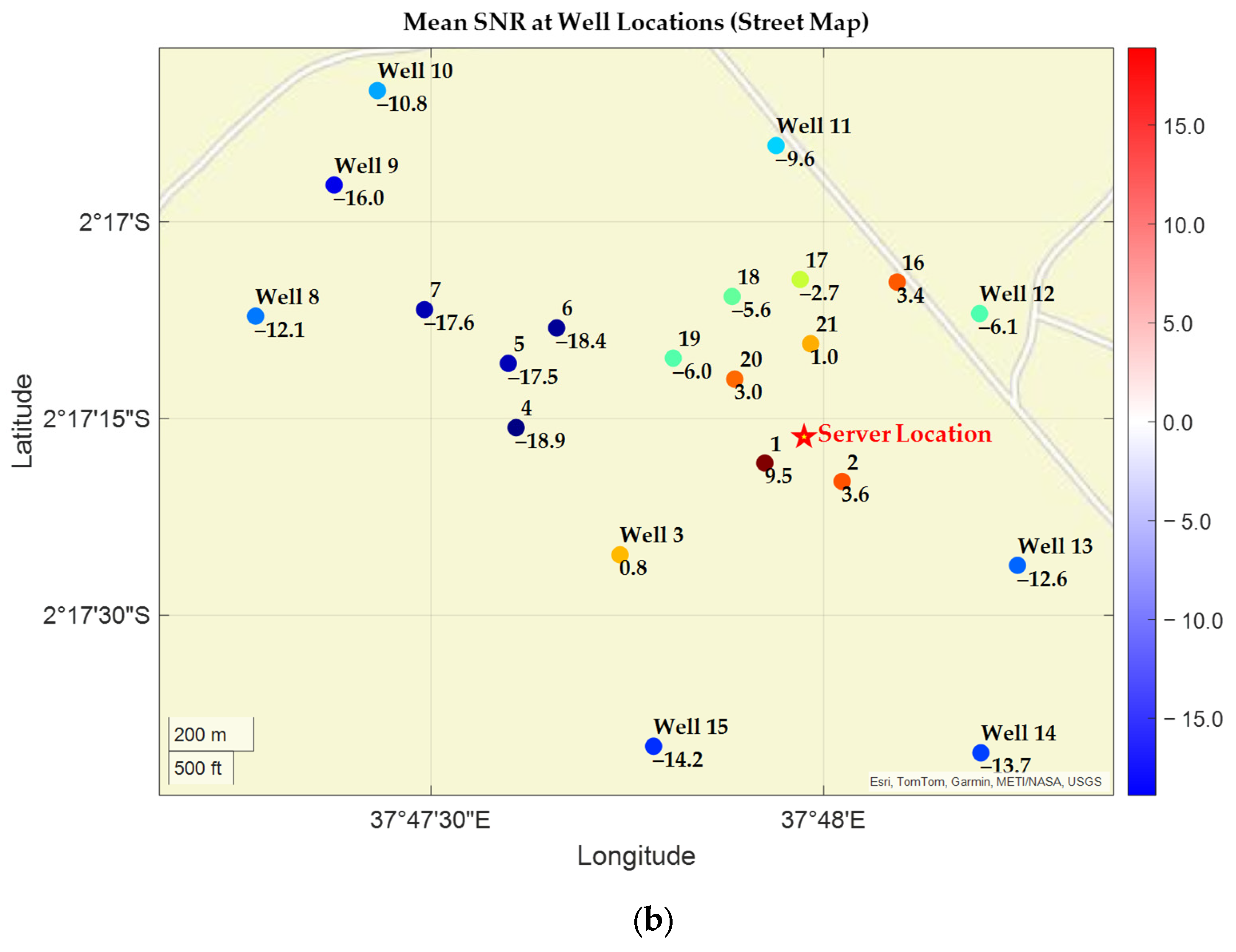
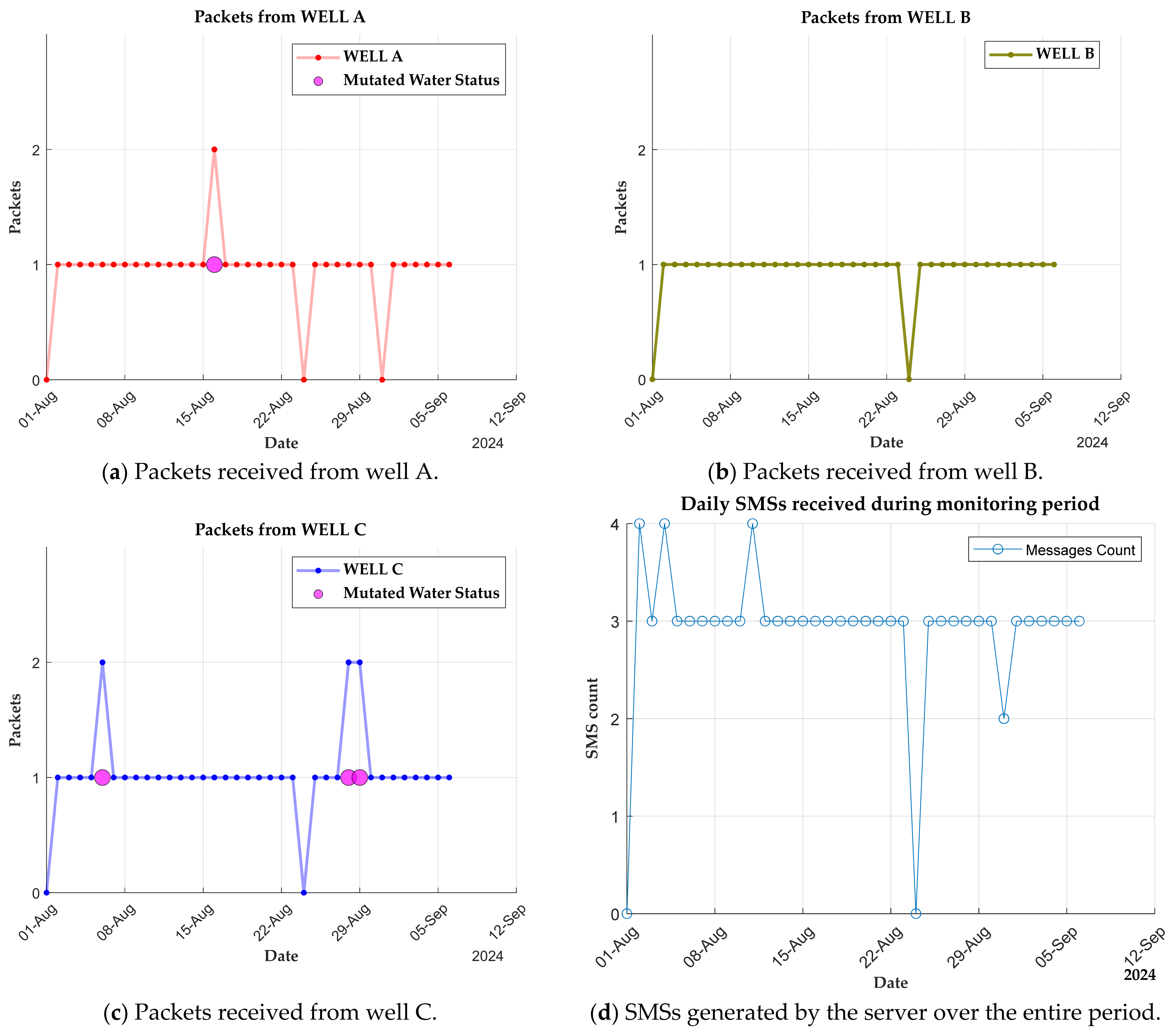



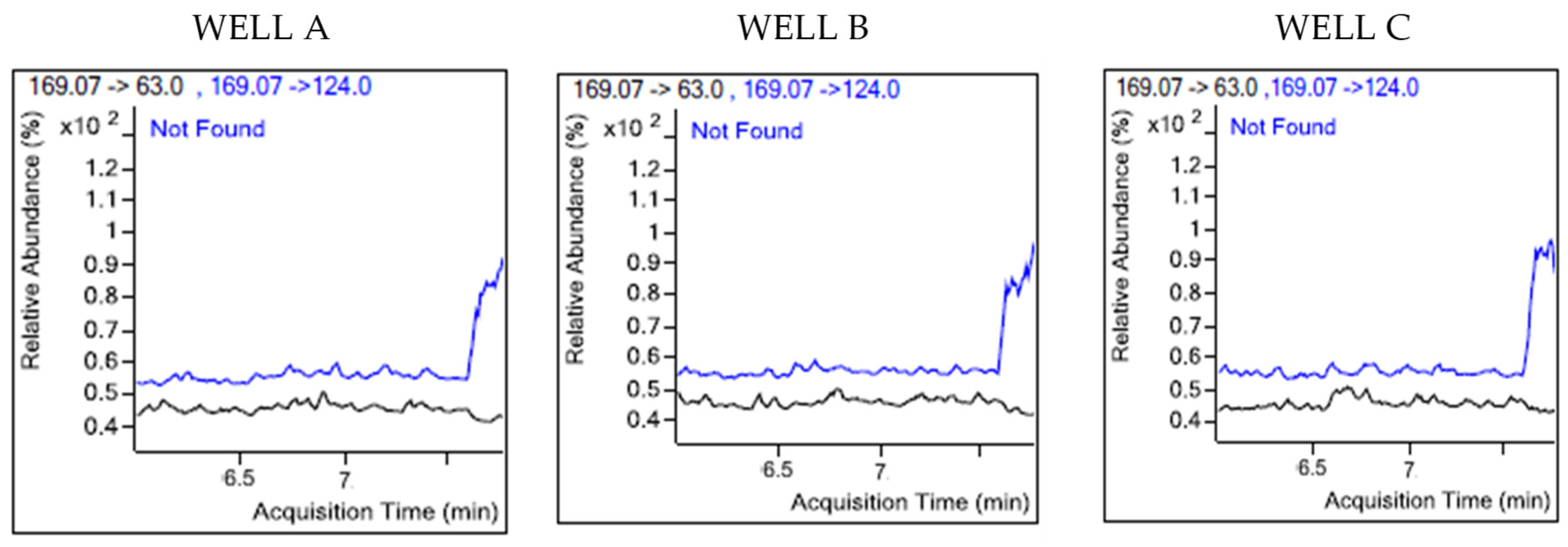
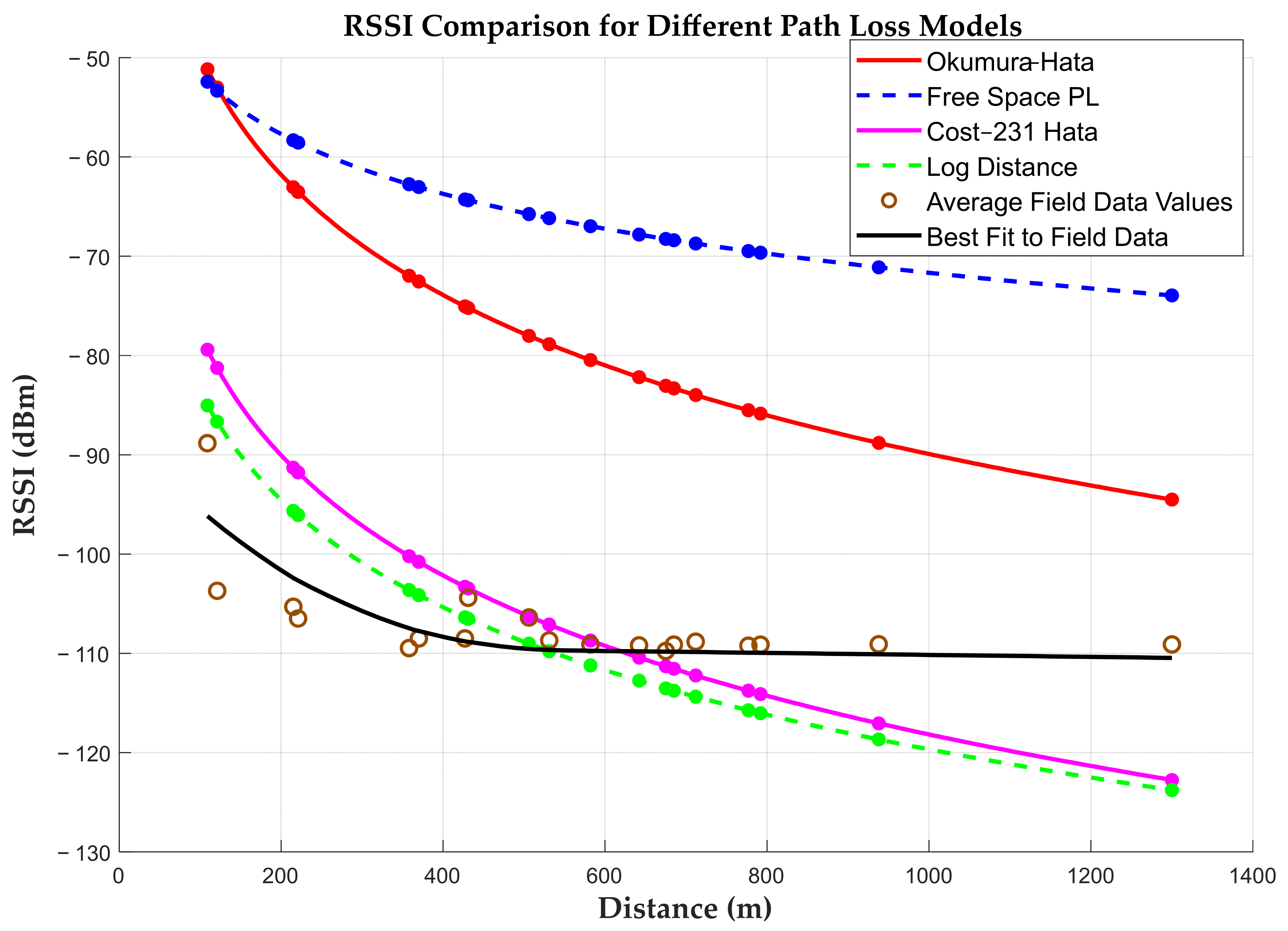
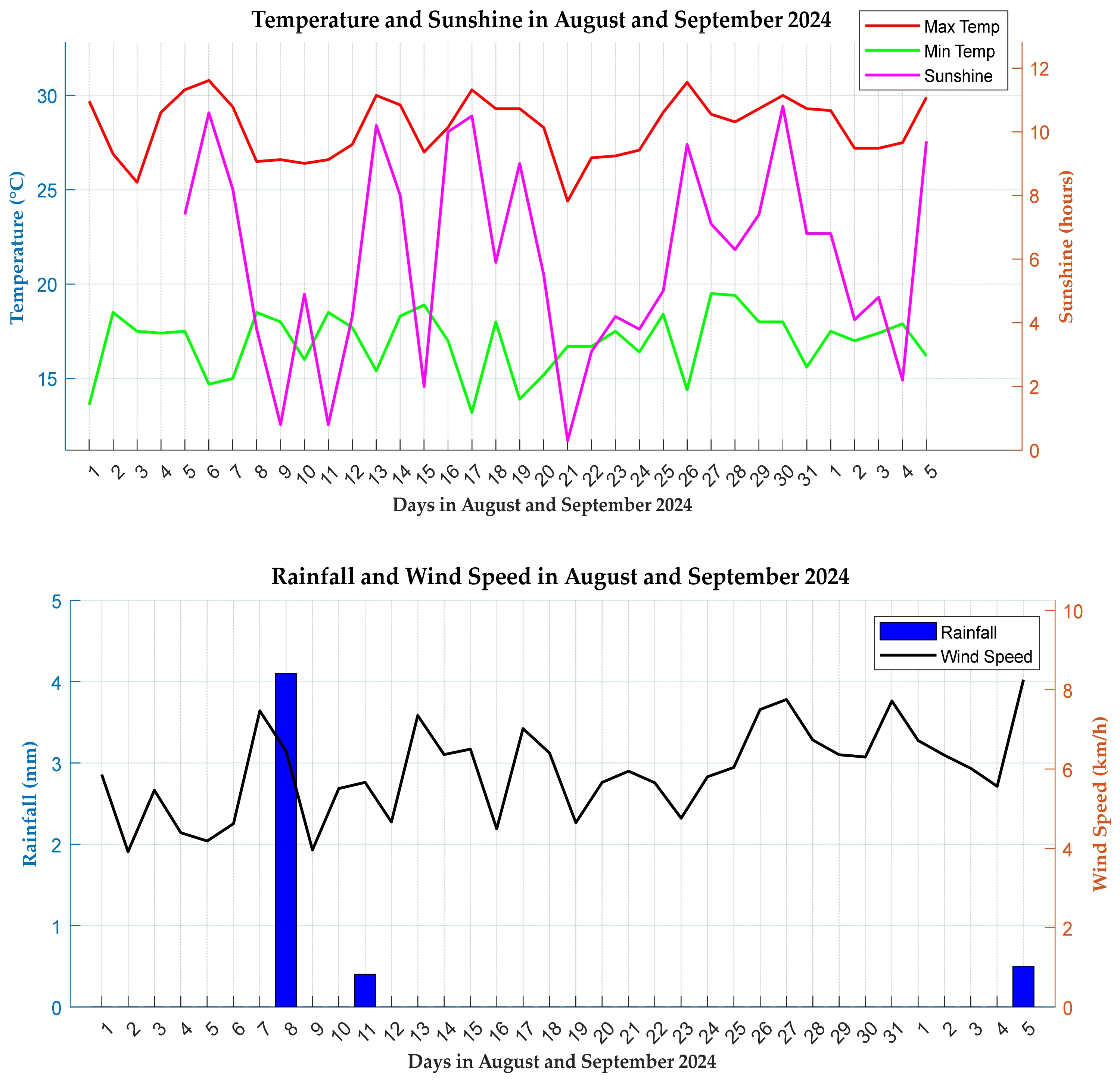

| Case Study | Technology/Approach | Results |
|---|---|---|
| Water quality monitoring in Krishna River (Karnataka, India) [62]. | IoT-based water quality monitoring. Statistical analysis for collected data. | One-way ANOVA was more effective in analysis than two-way ANOVA. Variations in parameters affecting water quality influenced by season. |
| Water pollution monitoring in Tuhuando river, Ecuador [63]. | IoT-based WSN system. Three node points based on population density and four data collection times per day. Application of quantitative metric of balance (QMB). Data analysing utilising supervised classification. | Data matrix reduced by 97% of original size. Achieved classification performance beyond 90%. |
| Monitoring of drinking water quality in Najaf, Iraq [64]. | IoT-based WSN with Wi-Fi utilised for node–server communication. Data collected from 5 water stations. Programmable logic controller (PLC) used as the control unit. | Water quality parameters were below those prescribed by the World Health Organization. |
| Monitoring quality of drinking water sources in Gataia, Romania [65]. | IoT-based system utilising Bluetooth radio frequency communication for acquisition of data. Five water sources were chosen and tested for three consecutive days. | Water from Tabor water pump source was not suitable for consumption. All the sources did not meet excellent quality of drinkable water. |
| Analysing a complex water quality dataset from Freiberger Mulde river in Saxony, Germany, to evaluate and optimise water quality variables and monitoring sites [66]. | Using quantitative methods to measure information from a monitoring network and applying PCA results to support outcome. Evaluating trade-offs between information of monitoring network and expenses of monitoring activities. A total of 364 chosen measuring points, where 27 are on the mainstream and 337 are on the tributaries. | Main causes of variations in water quality highlighted as mining, weathering, seasons, and waste water discharge. Warm weather favoured greater variations in the factors affecting water quality. Monitoring more parameters at fewer sites proved less costly. |
| Water quality monitoring in Zhanghe River, China, by using (UAV) drone multispectral imagery and ML algorithms [67]. | Acquiring high-resolution multispectral images using UAV flight missions. Collection of 45 samples from 5 sections of the river for ground-based lab testing of water parameters. Using ensemble method stacking ML to achieve better prediction results. | Non-linear models both using one input or multiple variables produced more accurate predictions than linear models except for chlorophyll-a, which performed particularly well despite being single-variable linear model. Estimating water quality parameters from remote sensing data shows a complex relationship between spectral information and parameters such as total nitrogen, total phosphors, and permanganate index. |
| Monitoring of water quality parameters using mixed online and portable methods in Umbulan drinking water processing outlet, Indonesia [68]. | Using supervisory control and data acquisition to populate water quality parameters into an online server for 30 days. Measurement of water quality parameters using portable devices once a week for comparison with the automated system. Data processing and display using Scada human machine interface. | Offline readings and sensor values had negligible differences throughout the month. Average water quality parameters using online system indicated high stability. |
| Assessment of water quality based on satellite imagery data, multisensor cruise device, and deep neural network in Qingcaosha Reservoir, Shanghai [69]. | Satellite images of the reservoir from sentinel-2 were obtained and processed. Water quality parameters for the day were captured using cruise BioFish along a designated route in the reservoir. Relationships of collected data were established using ML algorithms. Statistical performance metrics were used to evaluate the models’ accuracy. | Improved deep embedding clustering presented best performance in accuracy and stability over the other algorithms. Performance of each model increased with increase in size of training data. |
| S.no | WELL A | WELL B | WELL C |
|---|---|---|---|
| 1 | P001A | P001B | P001C |
| 2 | P002A | P002B | P002C |
| 3 | P003A | P003B | P003C |
| Model | Mean Absolute Error (MAE) | Root Mean Square Error (RMSE) | Standard Deviation (σ) |
|---|---|---|---|
| Okumura–Hata | 29.7657 | 31.9179 | 7.6186 |
| FSPL | 42.4517 | 42.5075 | 2.2369 |
| COST 231-Hata | 6.1379 | 7.9247 | 7.6186 |
| Log-distance | 5.1611 | 6.2493 | 6.4187 |
| Participant Id | Trial1 (s) | Trial2 (s) | Trial3 (s) | Trial4 (s) | Trial5 (s) | Trial6 (s) | Age Set (yrs) | Education |
|---|---|---|---|---|---|---|---|---|
| V001 | 29.48 | 26.18 | 21.76 | 17.34 | 17.75 | 18.05 | 18–35 | O’level |
| V002 | 30.01 | 25.65 | 23.10 | 19.00 | 19.00 | 18.28 | 18–35 | Primary dropout |
| V003 | 28.66 | 25.00 | 20.59 | 17.53 | 18.11 | 17.53 | 18–35 | Post sec |
| V004 | 29.89 | 27.04 | 21.37 | 18.08 | 17.21 | 17.06 | 36–60 | Post sec |
| V005 | 30.56 | 26.79 | 22.67 | 18.00 | 17.67 | 17.15 | 36–60 | O’level |
| V006 | 28.08 | 27.59 | 24.70 | 18.30 | 17.68 | 17.10 | 36–60 | Primary dropout |
| V007 | 31.98 | 27.38 | 22.51 | 20.52 | 19.41 | 18.87 | >60 | Post sec |
| V008 | 31.72 | 26.11 | 22.05 | 19.00 | 18.63 | 17.12 | >60 | O’level |
| V009 | 30.11 | 28.14 | 22.49 | 21.00 | 19.57 | 18.95 | >60 | Primary dropout |
| Item | Cost in GBP |
|---|---|
| Sensor’s modules | |
| Arduino Uno R3 expansion board | 22.26 |
| PN532 NFC expansion board | 32.22 |
| LCD keypad shield 2 × 16 | 7.99 |
| RFID tag 13.56 MHz | 1.78 |
| LoRa transceiver module—915 MHz | 10.50 |
| Glyphosate dipstick sensor | 21.73 |
| Simple Spring Antenna—915 MHz | 0.80 |
| Base station | |
| Arduino Uno R4 expansion board | 21.45 |
| Fona 808 shield GSM/GPS | 40.28 |
| LCD keypad shield 2 × 16 | 7.99 |
| LoRa transceiver module—915 MHz | 10.50 |
| Simple Spring Antenna—915 MHz | 0.80 |
| SD card 2 GB class 6 SLC | 27.06 |
| SD card shield v4 board | 12.55 |
| Energy harvesting system | |
| 12 V sealed lead acid (SLA), 7 Ah battery | 25.45 |
| R-78W DC/DC converter 5 V | 7.73 |
| 12 V, 10 A Solar Charge Controller | 37.13 |
| Phaesun 20 W Photovoltaic Solar Panel | 27.32 |
| Total cost | 315.54 |
| Item | Cost in GBP |
|---|---|
| Waters Acquity UPC2 system with PDA | 23,734.00 |
| Nanbei confocal Raman Microscope | 33,220.00 |
| Sciex 6500 + Triple Quad LC-MS/MS | 229,629.63 |
| Metrohm Misa SERS Raman | 30,637.95 |
| Agilent 6460C QQQ MS system with 1290 UHPLC front-end | 110,760.00 |
| Shimadzu prominence-i LC-2030C plus HPLC | 19,779.00 |
Disclaimer/Publisher’s Note: The statements, opinions and data contained in all publications are solely those of the individual author(s) and contributor(s) and not of MDPI and/or the editor(s). MDPI and/or the editor(s) disclaim responsibility for any injury to people or property resulting from any ideas, methods, instructions or products referred to in the content. |
© 2025 by the authors. Licensee MDPI, Basel, Switzerland. This article is an open access article distributed under the terms and conditions of the Creative Commons Attribution (CC BY) license (https://creativecommons.org/licenses/by/4.0/).
Share and Cite
Mutunga, T.; Sinanovic, S.; Offiong, F.B.; Harrison, C. Deploying a Wireless Sensor Network to Track Pesticide Pollution in Kiu Wetland Wells: A Field Study. Sensors 2025, 25, 4149. https://doi.org/10.3390/s25134149
Mutunga T, Sinanovic S, Offiong FB, Harrison C. Deploying a Wireless Sensor Network to Track Pesticide Pollution in Kiu Wetland Wells: A Field Study. Sensors. 2025; 25(13):4149. https://doi.org/10.3390/s25134149
Chicago/Turabian StyleMutunga, Titus, Sinan Sinanovic, Funmilayo B. Offiong, and Colin Harrison. 2025. "Deploying a Wireless Sensor Network to Track Pesticide Pollution in Kiu Wetland Wells: A Field Study" Sensors 25, no. 13: 4149. https://doi.org/10.3390/s25134149
APA StyleMutunga, T., Sinanovic, S., Offiong, F. B., & Harrison, C. (2025). Deploying a Wireless Sensor Network to Track Pesticide Pollution in Kiu Wetland Wells: A Field Study. Sensors, 25(13), 4149. https://doi.org/10.3390/s25134149






